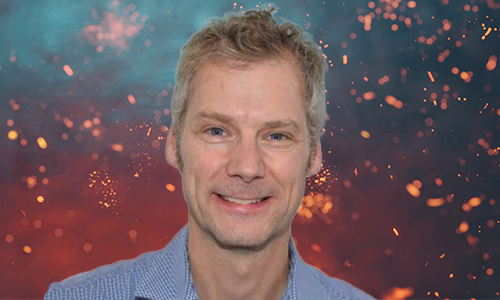Meet the partner:
Thorsten Tonnesen of the RWTH Aachen University

Can you shortly introduce yourself and your role in the HyInHeat project?
My name is Thorsten Tonnesen and I have an engineering degree and a PhD in metallurgy and materials. Currently I am a senior scientist and head of the Refractory Research Group of the Department of Ceramics at RWTH Aachen University.
My role in the HyInHeat project is the scientific cooperation of the refractory tasks with the industrial partners of the particular processes as well as the refractory material supplier.
How did GHI of RWTH Aachen University get involved in the HyInHeat project?
Since we are also an institute of RWTH Aachen University we had further project cooperations with IOB which is now coordinating the HyInHeat project.
How do you see the added value of HyInHeat for GHI of RWTH Aachen University?
Refractory materials are an integral part of metallurgical processes. Both, refractory and process, are usually systems aligned over a period of decades. Since the metallurgical processes are in a transformation the refractory material are part of this. To gain research results and knowledge about the performance in this project is an enormous added value since there is a direct link between fundamentals and industrial approach.
What is the role of GHI of RWTH Aachen University in the HyInHeat project?
The Institute of Mineral Engineering (RWTH-GHI) will perform analyses on refractory materials as part of the project. The focus is on characterizing the samples before and after use. This is a necessary step as the performance of refractories depends fundamentally on different aspects, like chemical composition, mineral phase composition as well as their microstructure, which are influenced by the process conditions. The chemical composition will be mainly determined by XRF (X-ray fluorescence spectroscopy) and ICP-OES (inductively coupled plasma optical emission spectrometry) and gives an indication on the chemical changes of the material. Since chemical composition and resulting mineral phases and their (mirco)structural stability are essential for the corrosion behavior and long term properties due to the differing conditions, therefore they are determined via XRD (X-ray diffraction). To obtain knowledge about the microstructure and its changes samples are examined via SEM/EDS (scanning electron microscope/ energy dispersive X-ray spectroscopy), this allows for example the local/localised measurement of the chemical composition of the microstructure.
What do you hope to achieve by the end of the project?
Hopefully we will have reliable results with a high TRL which are based on fundamental research and industrial experience.
Want to stay up to date about the HyInHeat project? Subscribe to our newsletter.
Meet other partners
Meet the partners: Toyota Motor Europe
Meet the partner: Dr. Magdalena Coventry of Toyota Motor EuropeCan you shortly introduce yourself...
Meet the partners: CEIT
Meet the partner: Dr. Amaia Iza-Mendia and Jon EtxeberriaCan you shortly introduce yourself and...
Meet the partners: RHI Magnesita
Meet the partner: Bernd Lorenzoni of RHI Magnesita Can you shortly introduce yourself and your...
Meet the partners: Politecnico di Milano
Meet the partner: Gianluca Valenti of PolimiCan you shortly introduce yourself and your role in...
Meet the partners: ArcelorMittal
Meet the partner: Victor Cuervo of ArcelorMittalCan you shortly introduce yourself and your role...
Meet the partners: Thermal Ceramics UK
Meet the partner: Dr Robin Mottram of Thermal CeramicsCan you shortly introduce yourself and your...






